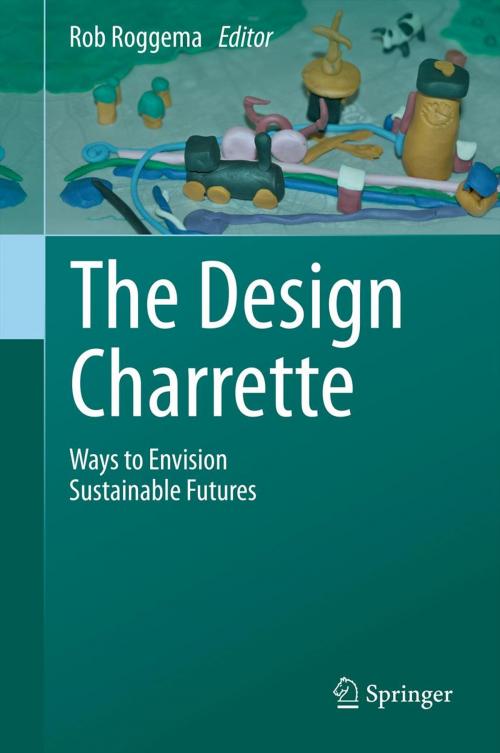The Design Charrette
Ways to Envision Sustainable Futures
Nonfiction, Science & Nature, Science, Biological Sciences, Environmental Science, Art & Architecture, Architecture, Nature| Author: | ISBN: | 9789400770317 | |
| Publisher: | Springer Netherlands | Publication: | September 11, 2013 |
| Imprint: | Springer | Language: | English |
| Author: | |
| ISBN: | 9789400770317 |
| Publisher: | Springer Netherlands |
| Publication: | September 11, 2013 |
| Imprint: | Springer |
| Language: | English |
This book was written to support community involvement in the design process, to help prevent negative outcomes that can result from a top-down design approach. The combination of community involvement and design is, at least in literature, not very extensive. Although much has been written about stakeholder involvement, this is often not directly related to design processes, which – most importantly – deprives community members of the opportunity to design their desired future themselves. The Design Charrette: Ways to Envision Sustainable Futures provides a theoretical foundation establishing the benefits of organizing a design charrette for community-based planning, supported by many practical examples. The book includes sections on collaborative learning, practical guidance, theory and case studies in many different contexts: long and short charrettes, urban and rural subjects, and Dutch, Chinese, Australian, Indian and European examples. Part I: General Theory offers a detailed overview of the charrette process, a chapter on innovations in organizational and community learning and a chapter on shifting paradigms in the design charrette. Part II presents a number of case studies, including the INternational Conference on Renewable Energy Approaches for the Spatial Environment (INCREASE); charrettes accomplished in two days in the communities of Sea Lake and Bendigo in Australia; a chapter on lessons for the future, describing rural participatory design in Rajasthan, India; a description of learning by practice in a high-pressure student atelier; a chapter entitled Design Charrettes for Sustainable Building in China and more. The Design Charrette challenges the conventional wisdom that good design by itself will bring about the benefits the designer envisions. By demonstrating and analyzing the effectiveness of design charrettes in personal development and learning, and as a way to share desired future pathways, the book benefits everyone who may be leading, considering or participating in a design charrette.
This book was written to support community involvement in the design process, to help prevent negative outcomes that can result from a top-down design approach. The combination of community involvement and design is, at least in literature, not very extensive. Although much has been written about stakeholder involvement, this is often not directly related to design processes, which – most importantly – deprives community members of the opportunity to design their desired future themselves. The Design Charrette: Ways to Envision Sustainable Futures provides a theoretical foundation establishing the benefits of organizing a design charrette for community-based planning, supported by many practical examples. The book includes sections on collaborative learning, practical guidance, theory and case studies in many different contexts: long and short charrettes, urban and rural subjects, and Dutch, Chinese, Australian, Indian and European examples. Part I: General Theory offers a detailed overview of the charrette process, a chapter on innovations in organizational and community learning and a chapter on shifting paradigms in the design charrette. Part II presents a number of case studies, including the INternational Conference on Renewable Energy Approaches for the Spatial Environment (INCREASE); charrettes accomplished in two days in the communities of Sea Lake and Bendigo in Australia; a chapter on lessons for the future, describing rural participatory design in Rajasthan, India; a description of learning by practice in a high-pressure student atelier; a chapter entitled Design Charrettes for Sustainable Building in China and more. The Design Charrette challenges the conventional wisdom that good design by itself will bring about the benefits the designer envisions. By demonstrating and analyzing the effectiveness of design charrettes in personal development and learning, and as a way to share desired future pathways, the book benefits everyone who may be leading, considering or participating in a design charrette.















